Editor’s Note: If you have heard anything about the SFG Certification, you have heard that it is a grueling, difficult, and demanding three days. There is nothing gratuitous about the intensity of this challenge, though. By expecting a high level of both mental and physical strength from our certified instructors, we ensure only those committed to high standards for themselves and for their profession will be able to boast the SFG credential.
The SFG is the gold standard — the toughest kettlebell certification to earn.
…which makes the following account from Jim Hatcher, SFG, all the more impressive. Jim is the oldest person ever to earn the title of SFG, at the age of 72. That’s right — not only did he endure the same three long days, but he also passed the requirements that test the mettle of athletes in their twenties and thirties, a great number of whom still fall short of the requirements, despite months and months of preparation.
Naturally, we asked Jim to write about how he came to commit to, prepare for, and pass this challenge. You bet, the SFG Certification is challenging — and it is also absolutely achievable.
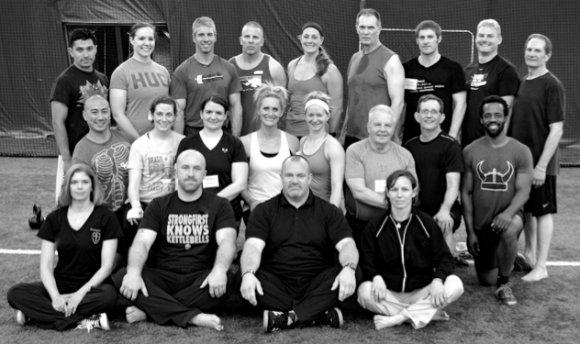
Jim’s Certification Story in Jim’s Own Words
So how did a 72-year-old guy decide to attend an SFG Level I Certification and — perhaps more importantly — prepare for the rigor of those three pretty intense days? Let’s start in April of 2013.
I had been training with kettlebells for a couple of years and felt pretty competent with the basic six skills. (I was sure wrong about that, as it turned out. Though I think I share that lesson with everyone who has attended the SFG Certification.)
I was ready to commit to the next step. Not needing the SFG as a credential to train others, but looking for a goal to train for, I sent an email to StrongFirst. I asked if was it okay to sign up for the Certification if your goal is not actually “certification,” but simply to complete the requirements as a personal goal. The answer I received? “Yes,” and that was just the motivation I needed.
Certification Preparation Guidelines
When the combined Level I and Level II Certifications at “The Dome” were announced for April 2014, the goal assumed a real time frame and I knew I needed a plan.
Of course, you know already that the plan worked! Here are its main elements:
- At the beginning, I made a commitment to myself that I would be successful. This was critical for me, otherwise I would not have been able to push through the nagging little injuries, the ups and downs of training, and the unforeseen that can create self-doubt and frustration.
- The basic outline for my preparation was one of the protocols followed by many as they prepare for SFG Level I.
- I trained “instinctively.” Meaning, I modified the days I trained based upon how I was feeling. I learned early on that I could not handle the volume of three days in a row, and even two contributed to what I call cumulative fatigue. Cumulative fatigue meant an unusually long recovery time that I could not afford. I finally found an equilibrium point where I was adhering to the order of the protocol, but on my own schedule.
- In January, I took the one-day SFG Course with SFG Team Leader Joe Sansalone as a self-test to determine how my skills had improved. This was a very valuable experience that allowed me to clearly identify my strengths and weaknesses. From this, I learned it would be necessary to focus more directly on specific skills.
- As I gained more confidence in the tested skills and the strength tests, I increased my one-arm and two-arm swings, and I increased the weight used (above my snatch test bell) as much as I could handle. This was my strategy for increasing my endurance and to strengthen my forearms and grip. This turned out to be one of the most important parts of my training. I also did a lot of walking and climbing stairs.
- The last four months I had a training partner, Keith Ciucci, who was doing the Level II cert at the same time as my Level I. This was invaluable. That second set of eyes is important in keeping your training focused on the skills.
As a result of all of this, I had a plan, but not so rigid that I was over-trained. I was goal-driven, but listened to my body and was not afraid to take a few days off when I felt I needed it.
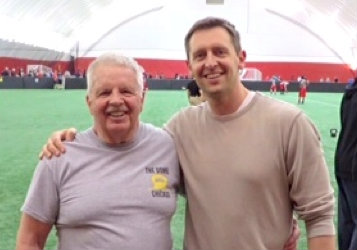
The SFG Certification Was a Highlight of My Life
On Sunday of my Certification weekend, I passed all of the tests except the get-up, and that was due to fatigue and loss of focus on my part. Subsequently, I submitted by video and that was approved.
The SFG Certification was one of the highlights of my life. It was physically and mentally demanding, and an immensely rewarding experience. The support and encouragement of the StrongFirst family and the camaraderie of my fellow candidates before, during, and after the has been an intangible that I would never have anticipated. I have met and become friends with many truly inspirational people. Quite a gift at this stage of my life.
Proud to be StrongFirst!
YOUR TURN. REGISTER TODAY AND BEGIN PREPARING FOR YOUR SFG.
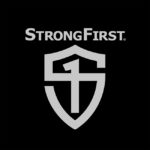
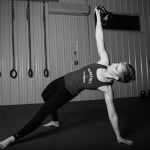
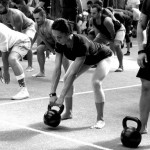
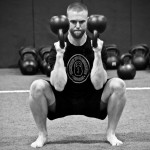

Great job Jim. An inspiration. As I prepare for my SFG 1 in November. I will commit to being successful too.
Jim Awesome Job ! You are a great inspiration and a tremendous power of example to others!!
Wow, that is really awesome!
Extremely inspiring !
Wow! Your a real inspiration, Jim! This is something I would like to accomplish sometime in the future.
You are a real inspiration, Jim.
This is an excellent article Jim! Thank you so much my friend, congratulations!
GREAT article Jim! Looking forward to sharing with some gents I know back at the gym.
This is outstanding. Real gems here. Thank you Jim!